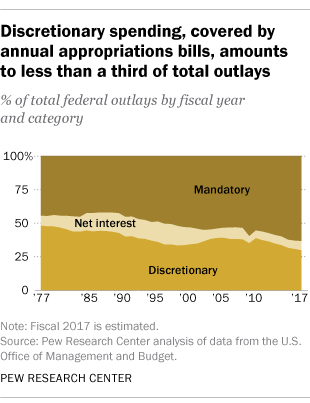 Relax. No matter how bad things might seem, they can always get worse.
Relax. No matter how bad things might seem, they can always get worse.
After watching a morning’s worth of Sunday talk shows, it’s clear that the government shutdown is solely the fault of Donald Trump and the Republicans. Or maybe “Chucky” Schumer, Nancy Pelosi, and the Democrats deserve full blame (or credit).
The important thing is that it’s causing real pain. Witness this from Robert Costa, who covers Congress for The Washington Post. It pretty much sums up everything about the current state of governance in D.C.
Members also complaining to me that the House gym lacks enough towels this morning and they wonder if it’s because of the shutdown.
— Robert Costa (@costareports) January 20, 2018
This is amazing on several levels, not the least of which is that congressmen aren’t even sure if they shutdown they allowed to happen is the reason their gym doesn’t seem to be running at full capacity.
As Peter Suderman notes, both at Reason and in The New York Times, the budget process—which sets what the government plans to spend in a given year—is fundamentally broken. Indeed, since the current budgeting rules went into effect over 20 years ago, the federal government has enacted a full budget on time just four times.

 The good news is that annual appropriations on things such as defense and education (also known as “discretionary” spending) cover a smaller and smaller percentage of federal spending, currently just 30 percent of outlays. The bad news is that “mandatory” spending on entitlements and interest on the debt, which don’t need to be authorized every year, comprise 70 percent of spending. So the total amount of government spending can keep increasing even if Congress is forced to share towels in its taxpayer-financed gym.
The good news is that annual appropriations on things such as defense and education (also known as “discretionary” spending) cover a smaller and smaller percentage of federal spending, currently just 30 percent of outlays. The bad news is that “mandatory” spending on entitlements and interest on the debt, which don’t need to be authorized every year, comprise 70 percent of spending. So the total amount of government spending can keep increasing even if Congress is forced to share towels in its taxpayer-financed gym.
From the peacocking on display this morning, it seems likely that the current impasse will last for a while. The last significant shutdown, which occurred in the fall of 2013, lasted 16 days. A year later, Sen. Rand Paul, the libertarian-leaning Republican from Kentucky, said that
It cost us more to shut the government down than to keep it open… You know your government’s dysfunctional if it costs more to shut it down than to keep it open, because we paid all these people.
Paul was pointing out that “non-essential” federal employees who were furloughed during the shutdown eventually got back pay and various interest penalties were incurred. Economists disagree whether shutdowns reduce economic activity. It’s a complicated issue partly because government spending is counted immediately as part of GDP, so any reduction in that by definition shrinks the economy. If the evidence on the 2013 shutdown is contested, the Bureau of Economic Analysis found that the economy grew during the 1995 and 1996 shutdowns.
The fact of the matter is that the government shutdown will not affect most people and all “essential” functions of government—including stuff like air-traffic control, TSA checks, and the like—will carry on. If you work for the federal government, need an expedited passport, and more, you’ll be screwed (though if past is prologue, federal employees will be paid in full for days they didn’t work). The Senate is reconvening today with the goal of putting together a short-term continuing resolution that will last at least a couple of weeks. The president is calling for the GOP Senate to undercut the filibuster rule that requires 60 votes to end discussion of bills, a “nuclear option” that would allow legislation to get voted on with a simple majority. But even if that does happen, absent an actual budgeting process, we’ll just be back here again and again and again. For many libertarians, that sort of gridlock is good. But when you look at the way federal spending is done, gridlock just isn’t an option anymore. There needs to be actual changes in the way entitlements are doled out. And that’s a conversation nobody in office seems interested in having, no matter what sweat-covered representatives are wiping themselves off with these days.
from Hit & Run http://ift.tt/2F0TB0D
via IFTTT